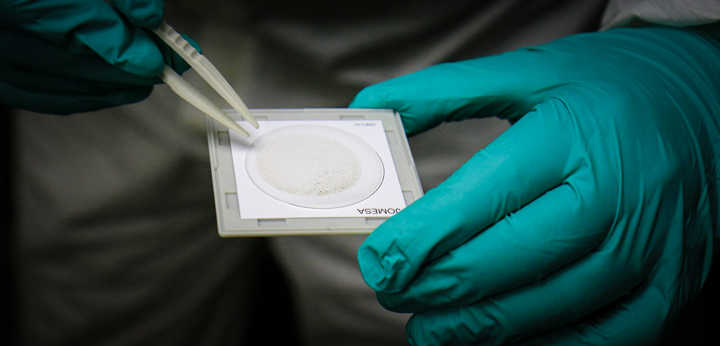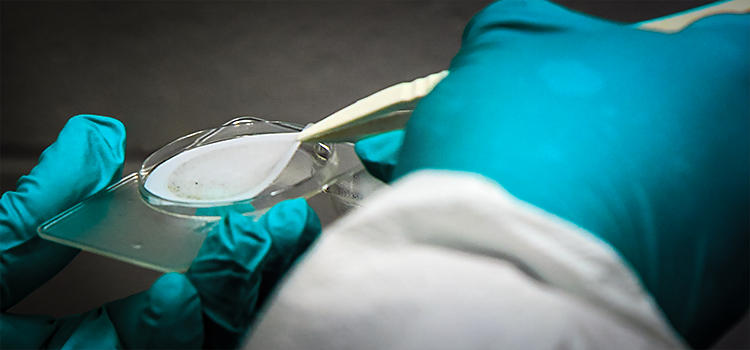Choosing the right materials for your industrial parts washer is crucial to ensure longevity, performance, and cost-effectiveness. When it comes to parts washers, one of the key decisions you need to make is whether to opt for carbon steel or stainless steel.
CARBON-STEEL VS. STAINLESS-STEEL PARTS WASHERS: MAKING THE BEST CHOICE
Choosing the right materials for your industrial parts washer is crucial to ensure longevity, performance, and cost-effectiveness. When it comes to parts washers, one of the key decisions you need to make is whether to opt for carbon steel or stainless steel.
Carbon Steel: Strength and Cost-Efficiency
Carbon steel is a popular choice for parts washers due to its strength and cost-efficiency. It's a sturdy and durable material making it suitable for applications where the washer will be subjected to heavy loads and harsh conditions.
Cost: Carbon steel is generally more budget-friendly than stainless steel. This can be a significant advantage if you are working with a tight budget but still need a reliable parts washer.
Corrosion Resistance: While carbon steel is susceptible to corrosion, it can be mitigated through proper maintenance and using wash chemicals that inhibit corrosion. A pH higher than 10.5 will ensure the steel surfaces are protected against premature corrosion. However, hard water will react with most alkaline cleaners, reducing their rust inhibiting properties. In addition, hard water tends to form scales that can lead to localized corrosion.
Longevity: If not properly maintained and protected from corrosion, carbon-steel washers tend to have a shorter lifespan compared to stainless-steel washers, especially in harsh environments. When properly maintained, carbon-steel washers may operate effectively for more than 25-years.
Maintenance Requirements: Establishing a routine maintenance schedule is crucial for keeping a carbon-steel parts washer in optimal condition. Regularly inspect all components, including pumps, nozzles, filters, and heating elements, to ensure they are functioning correctly. Remove any accumulated debris or sediment that could affect the efficiency of the washer.
Meeting Cleanliness standards: Carbon-steel washers, while robust and cost-effective, are ideally suited for general-purpose cleaning yet may pose challenges in meeting high cleanliness standards on new manufactured components. The material's susceptibility to corrosion can lead to the formation of rust and oxidation, potentially introducing contaminants into the system. Additionally, carbon steel's magnetic properties may result in the accumulation of metallic particles, affecting the cleanliness of the washer over time.
Provided it is equipped with proper filtration, a carbon-steel washer, , can meet a gravimetric requirement of more than 1 mg and particle sizes in excess of 400-micron, on newly manufactured components.
Stainless Steel: Durability and Corrosion Resistance
Stainless steel is durable and corrosion resistant. It is a premium choice for parts washers in various industries. Stainless steel is not as strong as carbon steel and the limited availability of heavy-duty stainless-steel structural beams, conveyor chains, and various other components may impose design constraints.
Cost: While stainless-steel parts washers often come with a higher initial cost compared to carbon-steel machines, the long-term benefits must be considered. The reduced maintenance and longer lifespan of stainless steel can result in cost savings over the life of the equipment.
Corrosion Resistance: Stainless steel is highly resistant to corrosion, making it an ideal choice for parts washers that use corrosive chemicals. Stainless steel’s resistance to corrosion minimizes the risk of contamination due to material degradation and is a better choice for applications where cleanliness is a top priority.
Longevity: Stainless-steel parts washers tend to have a longer lifespan than carbon-steel washers, reducing the need for frequent replacements and maintenance.
Maintenance Requirements: Although stainless-steel washers require less maintenance to prevent corrosion, their components — including pumps, nozzles, filters, and heating elements — must be maintained just as on a carbon-steel machine.
Meeting Cleanliness standards: Stainless-steel washers, with their inherent corrosion resistance, are better equipped to meet stringent cleanliness requirements for new manufactured components. The alloy's resistance to rust and oxidation minimizes the risk of contamination, making it an ideal choice for applications where cleanliness levels are paramount. Stainless steel's non-magnetic nature also reduces the likelihood of attracting metallic particles, contributing to a cleaner and more reliable system.
A stainless-steel washer with proper filtration is required to achieve gravimetric criteria of less than 1 mg and particle size limitation below 400 microns.
Making the Right Choice
While both carbon-steel and stainless-steel washers have their respective merits, the choice between them ultimately depends on the specific requirements of the application.
When cleanliness is paramount, especially for precision components used in internal combustion engines, transmissions, gearcases, and other critical applications, stainless steel emerges as the preferred option. While it may come with a higher initial cost, its long lifespan and low maintenance requirements can justify the investment in the end.
If you prioritize affordability and do not need to meet stringent cleanliness requirements, carbon steel can be a practical choice. However, it will demand more diligent maintenance and protection against corrosion.
Schedule a free consultation with the PROCECO team today.



